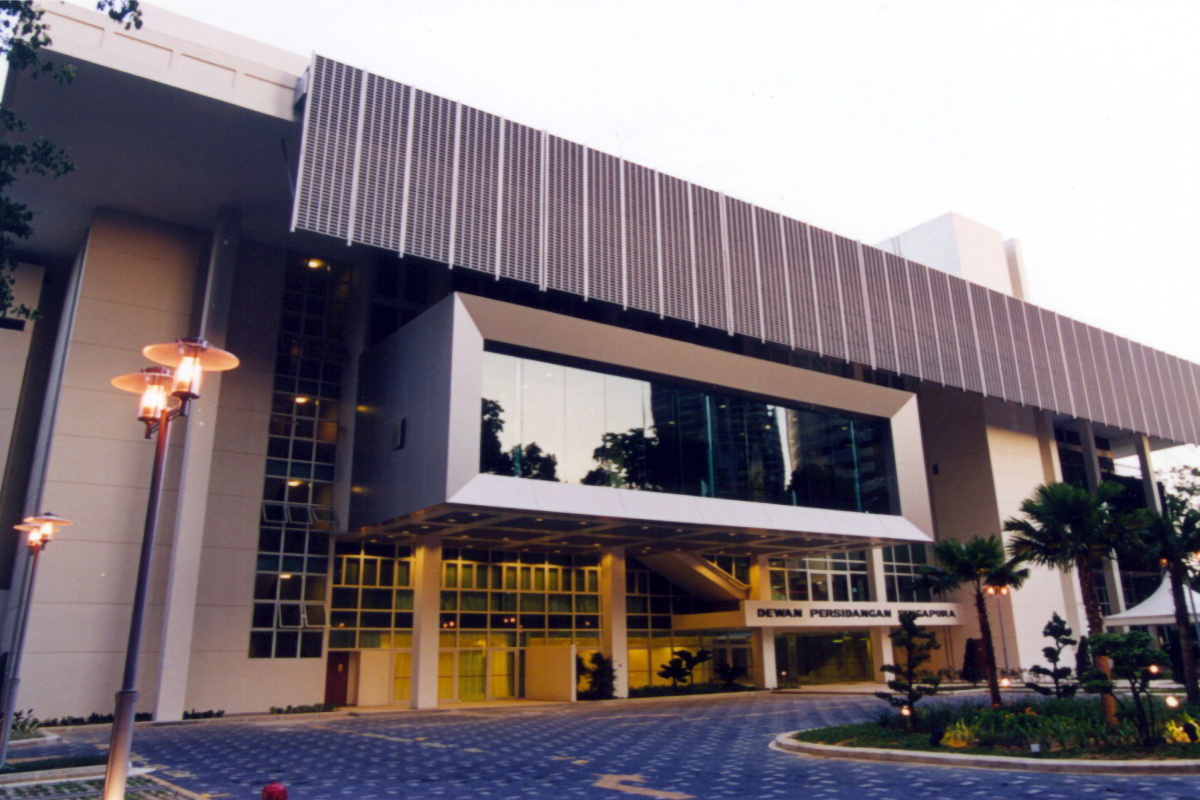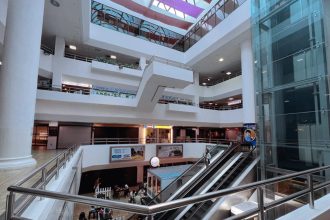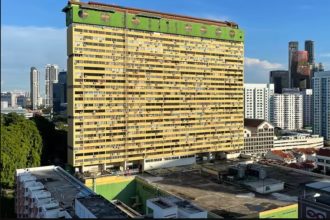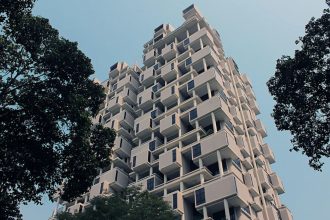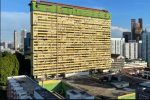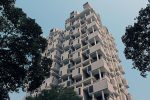Key takeaway
The Singapore Conference Hall is a vivid example of tropical modernism: a modernist structure shaped for Singapore’s climate, yet rooted in union history. Built in the early 1960s as a home for trade unions, it now houses the Singapore Chinese Orchestra, bridging its trade‑union past with its role in cultural life today, while remaining a key site for public events and heritage education.
Standing tall on Shenton Way in the heart of Singapore’s financial district, the Singapore Conference Hall blends architectural boldness and historical momentum. It is not just a building: it is a symbol of nation-building, labour unity, and the creative energy that grew with modern Singapore. Nearby cultural landmarks, including Chinatown, which houses the largest hawker centre, reinforce the area’s rich heritage. The building’s position near historic shophouses and modern towers creates a striking contrast that embodies Singapore’s layered urban development.
The story behind its name: From trade union house to concert hall
The building’s original name was Singapore Conference Hall and Trade Union House. It served as the Secretariat for the National Trades Union Congress (NTUC). Construction began in August 1962 and concluded in 1965. The building was officially opened on 15 October 1965 by Prime Minister Lee Kuan Yew, just two months after Singapore gained independence.
The name reflects its dual role: it was both an administrative centre for the labour movement and a meeting place for conferences that shaped Singapore’s early political and economic direction. It became a gathering place for workers, union leaders, and policymakers, embedding the building deeply in the social history of Singapore.
Tropical modernism in its architecture
The architectural style of the Conference Hall is firmly modernist. It was designed by Malayan Architects Co‑Partnership, a team including William Lim, Chan Voon Fee, and Lim Chong Keat. The design was selected in a public competition in 1961, reflecting Singapore’s desire to show a forward-looking vision even in its early years of independence.
What sets it apart is how it responds to Singapore’s tropical climate. The bold butterfly or V-shaped cantilevered roof and long louvred screens under the roof provide natural ventilation and reduce direct sunlight. These design elements demonstrate how tropical modernism can merge functional needs with aesthetic clarity. Visitors today can still see how the building breathes naturally, even as the city around it heats up with dense traffic and glass towers.
Material-wise, the building is honest and direct: concrete, glass, and steel. But the architects also wove in local identity. Inside, you find mosaic tiles echoing mengkuang mat patterns, oil murals of ku‑ku figures, and merbau wood finishes. These delicate touches soften the austerity of modernism, connecting Singaporean design to familiar cultural references. Nearby preserved buildings, like the Chinese Heritage Centre, highlight Singapore’s commitment to balancing modern development with heritage conservation.
Functional zoning and natural ventilation
The building was divided into two main wings: one for trade union offices and the other for the conference hall/auditorium. Between them lies a naturally ventilated concourse visible from outside, thanks to glass curtain walls. This concourse acts as both a social space and a climate buffer, encouraging informal interactions between workers and visitors.
The thoughtful zoning allowed the hall to function efficiently during both large gatherings and smaller meetings. Office spaces were designed to maximize daylight and airflow, while the auditorium was acoustically tuned for speeches and performances. Today, these design strategies still demonstrate an early understanding of sustainability and human-centric design.
Trade union heritage: a building for workers
When it opened, the building was more than symbolic: it had offices, meeting rooms, a canteen, and even radio and broadcasting facilities. Over the years, this building hosted many landmark political and labour events. It became a hub for national rallies, conferences, and the presentation of national awards, giving workers a tangible place to convene and be heard.
Beyond administrative functions, it cultivated a sense of community among workers. The canteen and communal spaces allowed informal conversations that often influenced decisions in Singapore’s early labour movement. This human-centered approach made the building a social as well as political institution.
National significance and later change
In 1971, the Conference Hall hosted the Commonwealth Heads of Government Conference, marking the first time the meeting was held outside London. In 1969, it hosted a State Banquet celebrating Singapore’s National Day and the 150th anniversary of modern Singapore. For decades, NTUC used the building as its headquarters. But eventually, it outgrew the facility and relocated, leaving a space ready for adaptive reuse while retaining its historical significance.
Transformation into a cultural landmark
In 2001, the building was refurbished and repurposed. The Singapore Chinese Orchestra (SCO) took over, and the original conference hall was converted into a concert hall. Renovations preserved key features such as the louvred façades and butterfly roof, maintaining the building’s tropical modernist identity while improving acoustics and seating arrangements for music performances.
Architectural interventions were sensitive to the original structure. Modern amenities such as climate control and lighting were discreetly integrated to ensure performances meet contemporary standards. This adaptive reuse demonstrates how heritage buildings can be revitalized for new purposes without losing their historical essence.
Today’s use and design legacy
Today, the Singapore Conference Hall is celebrated as a music oasis in the city centre. Variable acoustic settings suit different kinds of performances, from symphonic concerts to traditional Chinese music. The building also houses a resource library, score library, practice studios, and exhibition rooms. Visitors walking along postwar architectural landmarks nearby can trace the evolution of Singapore’s modernist movement, making the hall a focal point for architecture and culture enthusiasts alike.
The building in numbers: facts at a glance
| Building | Key facts | Nearest MRT | Sources |
|---|---|---|---|
| Singapore Conference Hall | 5 storeys; completed 1965; conservation: National Monument since 2010 | Tanjong Pagar / Shenton Way | Wikipedia |
Why its trade union legacy still matters
This building is more than bricks and mortar. It was born from a political and social promise: to give workers a home, a voice, and a platform. Its foundation stone was laid by a worker representing the labour force, symbolizing collective effort. In its trade union era, it hosted conferences, broadcasts, meetings, and discussions shaping Singapore’s labour landscape.
Later, as it became a concert hall, it preserved that sense of gathering, not just of unionists, but of listeners, musicians, and audiences. The hall continues to facilitate cultural exchanges while honouring its heritage. Readers interested in more details about the building can review its Singapore Conference Hall history for official information on architecture and heritage.
Community engagement and education programs
Beyond performances, the hall hosts workshops and educational programs, particularly aimed at young musicians. It partners with schools and community organisations to encourage appreciation for traditional and modern Chinese music. These programs extend the building’s legacy, keeping its mission of collective learning and cultural sharing alive.
Open rehearsals and guided tours give visitors a chance to see the architecture up close while understanding its history. These initiatives reinforce the building’s role as a community hub, bridging historical memory with contemporary culture.
Architectural influence across Singapore
The Singapore Conference Hall influenced many subsequent public buildings in Singapore, inspiring designers to integrate climate-conscious features and tropical motifs into modernist forms. Its use of natural ventilation, sun-shading devices, and open communal spaces set a precedent for civic architecture in a humid tropical climate.
Architects still reference its design principles when creating modern concert halls, libraries, and community centres. The building’s integration of cultural symbolism into functional design continues to serve as an educational model for students of architecture and heritage conservation.
A living legacy of tropical modernism and labour history
The Singapore Conference Hall stands as a reminder that architecture can be political, social, and human. It shaped and was shaped by trade union aspirations in a young nation. Today, as it echoes with music and performance, it continues to connect people across generations. That continuity bridges its trade‑union past with a creative future, illustrating how buildings can evolve in purpose while remaining historically and socially meaningful.
Its walls, once filled with the discussions of union leaders and government officials, now host orchestras, educational programs, and public events that celebrate Singapore’s cultural identity. Visitors can experience
